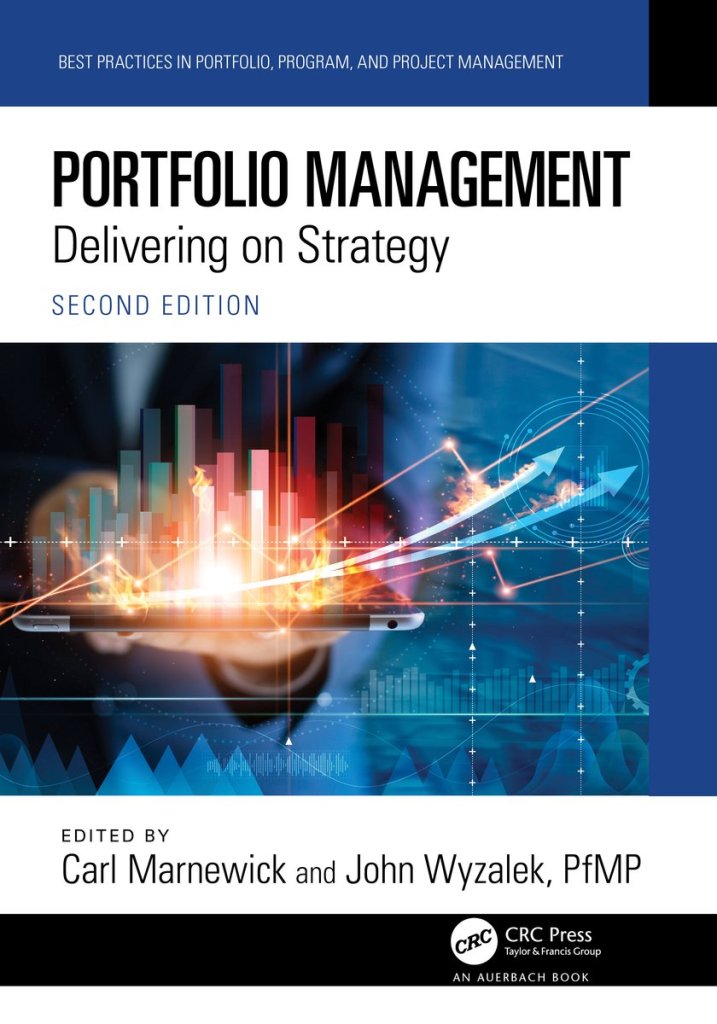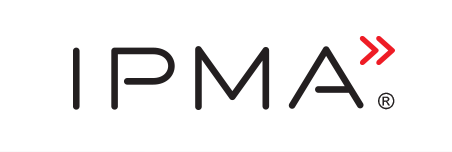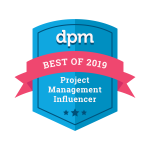
“Portfolio Management – Delivery on Strategy” edited by Carl Marnewick and John Wyzalek, presents a collection of 12 articles from various authors. The book focuses on the benefits of portfolio management to organizations, emphasizing specific aspects within the discipline and how each should be managed from a business perspective rather than strictly a portfolio management perspective.
Topics such as product development, portfolio development, governance, marketing, success, communications, uncertainty, and agile and dynamic capabilities in portfolio management are explained in detail.
The book begins with a chapter exploring the origins of project portfolios, aiming to explain current conceptions of project portfolios.
The second article explores the relationship between corporate strategy and project management in product development. It discusses strategy, key players, the timing of strategic changes, the projects involved in delivering products, and the importance of project risk reviews.
The next article focuses on building a new portfolio and outlines several reasons why portfolios fail or do not meet expectations. Common issues include being set up for the wrong reasons, lack of organizational acceptance, unrealistic expectations about what portfolios can achieve, and incorrect or unsuitable setups.
To address these issues, you should identify the stakeholders and the value being delivered. It’s essential to establish a simple and straightforward portfolio governance process that supports its needs. There must be a clear link between the executed components and the delivery of strategic elements, which is framed in the portfolio charter and enhanced through the portfolio plan. Initial portfolio reports should be simple, with a few KPIs relevant to the strategic goals and objectives. Plans should include contingencies, alternative delivery options, and backup plans to ensure flexibility and preparedness.
The fourth article, “Establishing a Governance Model for Strategic Portfolio Management,” begins with the Standard for Portfolio Management (PMI) and its six performance domains: portfolio governance, portfolio capacity and capability management, portfolio stakeholder management, portfolio value management, portfolio risk management, and portfolio strategic management. The author outlines six key questions to answer in order to develop a pragmatic, sensible, and effective governance model.
These questions include defining the purpose and identifying which portfolios will be managed, determining who will manage the portfolio, and establishing how projects will be selected for the portfolio. Additionally, the model should address how decisions will be made, and conflicts resolved by the portfolio committee, how often meetings will occur and the rules governing them, and what the role of the PMO will be in portfolio management. These questions guide the development of a robust governance model that aligns with strategic objectives and ensures effective portfolio management.
A subsequent article explains that a well-structured governance model provides accountability, transparency, integrity, protection, compliance, availability, flexibility, retention, and disposition. Portfolio governance facilitates strategic decision-making. On the component side, portfolio governance addresses how each portfolio component (projects, programs, sub-portfolios, and operational work) is managed and supported throughout its lifecycle. On the internal side, it focuses on how the portfolio manages itself, including the processes and framework that define the portfolio and its composition. The article includes examples such as a decision matrix, governance expectations by project lifecycle, a career path matrix based on project complexity and cost, and a sample project prioritization matrix for a technology portfolio.
The next article focuses on marketing. There are three types of organizations involved in managing projects, programs, and portfolios: the project or program itself, the investor undertaking the project, program, or portfolio, and the contractors delivering services to the investor. All three organizations must engage in marketing.
The project itself uses marketing to engage stakeholders (marketing by the project). The focus of project marketing is on relationship management, trust, collaboration, communication, training, and alignment with stakeholders. Contractors use marketing to secure current and future projects (marketing for the project). Their marketing efforts target decision makers, including strategic decision makers, operations managers, and technology managers. The investor, or the organization identifying the project opportunity, uses marketing to promote the project, its outputs, outcomes, and goals at all stages of the investment process (marketing of the project). This ensures continuous support and alignment with the broader strategic objectives.
The following article discusses the factors contributing to portfolio management success. There are four major reasons why portfolios may fail: having too many projects in the portfolio, including the wrong projects, misalignment of projects with the organization’s strategy, and an unbalanced portfolio.
The main criteria for portfolio success include maximizing the financial value of the portfolio, linking the portfolio to the organization’s strategy, balancing projects within the portfolio considering the organization’s capacities, ensuring the average success of individual projects within the portfolio, and maintaining sustainability.
Key project success factors required to ensure portfolio success are executive support, a dedicated portfolio sponsor, full-time resources, a skilled portfolio manager, adherence to processes, and careful selection and prioritization of components. Organizations need repeatable and successful portfolio performance, which should be accompanied by continuous improvements in the portfolio management process.
The following articles focus on communication. Organizations that excel in both internal and external communication have proven to be more resilient. Communication is essential for uniting people, organizational units, vendors, and partners around the overarching mission, goals, and objectives. In addition to formal and informal lateral communication, the portfolio management ecosystem integrates upward and downward communication along with a transactional model of communication.
Effective communication is fundamental to decision-making. It involves conveying information up the chain of command and down to those executing the work. Trust is crucial for the success of a portfolio and for ensuring that strategic goals are met. Technology plays a significant role in aiding the portfolio team to communicate effectively with stakeholders.
The zone of uncertainty is the murky area between an organization’s vision for achieving business success and the actual work that delivers value. This zone is a highly complex and dynamic region between an organization’s vision and the portfolios, programs, and projects created to realize that vision. In reality, outcomes are often unpredictable. The straightforward line assumed between executives’ strategic objectives and the approved and resourced project work will likely deviate.
An activity can only succeed with the informed consent of its stakeholder community. Managing the relationships between this community and the team will increase the chances of success. Factors that affect communication effectiveness include perception and reality, personality, culture, and environmental and personal distractions. Understanding the needs and expectations of each key stakeholder, as well as the stakes they may have in the outcome, is crucial to understanding their drivers or business needs.
A subsequent article discusses strategic alignment for agile portfolios. It begins with the theoretical background of project portfolio management (PPM), explaining its four main goals: strategic direction, value maximization, portfolio balance, and portfolio performance. The article further explains SAFe (Scaled Agile Framework) as an agile portfolio management framework in the context of these four goals.
The final article discusses how, in a dynamic environment, PPM (Project Portfolio Management) can act as a dynamic capability that enables organizations to respond to change effectively. PPM manages and balances the portfolio holistically, aligns projects with strategy, and ensures adequate resourcing to maximize the benefits from project investments. PPM facilitates decision-making across the entire portfolio by:
- Collecting information from all projects. Dynamic environments may require more frequent updates of project data.
- Collating and organizing this information. Graphical and visual displays, such as portfolio maps and summaries, must be kept up to date in dynamic environments.
- Presenting the information to a carefully selected decision-making team for portfolio-level review. In dynamic environments, enhanced sensing capabilities need to be incorporated to detect changes, and the time between decision meetings may need to be shorter.
- Providing a structure for communicating and implementing decisions. Adjustments to the portfolio may need to be more frequent in dynamic environments.
This approach ensures that the organization can respond swiftly and effectively to changes, maintaining alignment with strategic goals and maximizing the value derived from project investments.
Conclusion. The book certainly helps to provide a better understanding of portfolio management. While a few articles lack detail and are too general, the other articles offer valuable insights into portfolio governance, marketing, success, communication, value, and PPM as a dynamic capability. However, the book would benefit from a more cohesive flow between the articles. As it stands, it is a collection of articles with occasional overlapping introductions to PPM.
To order Portfolio Management – Delivery on Strategy: managementboek.nl, bol.















